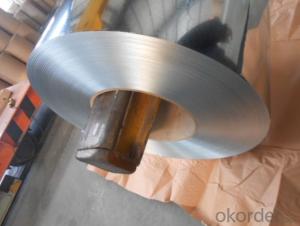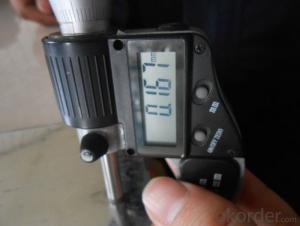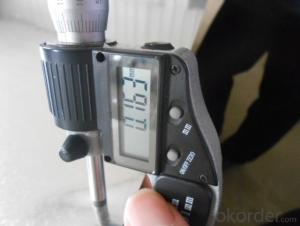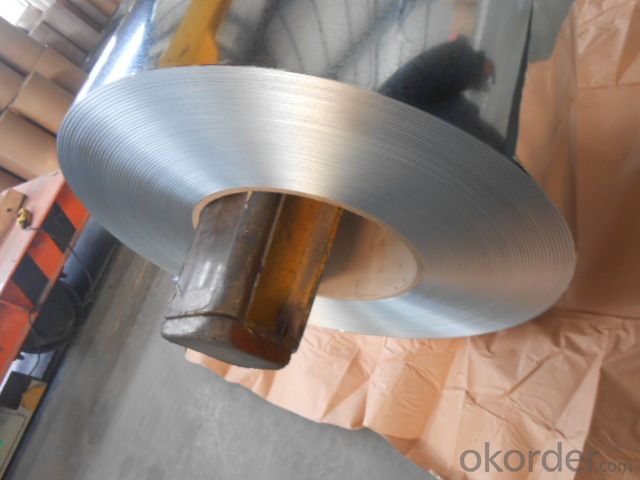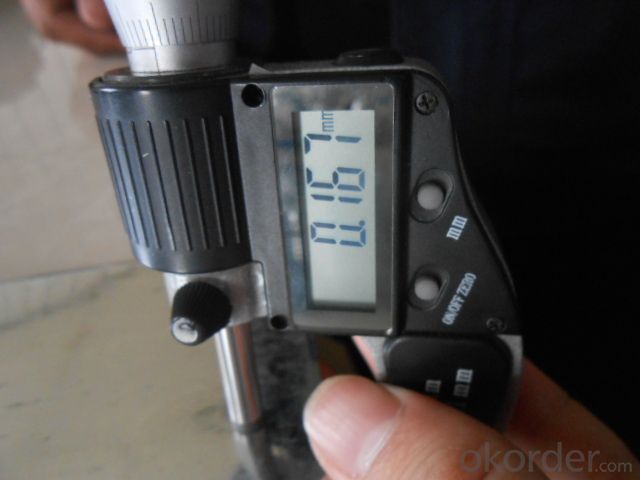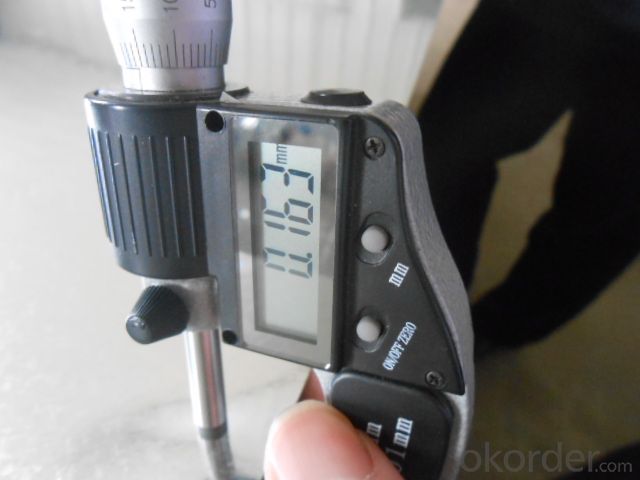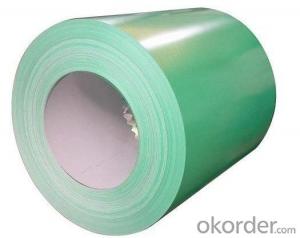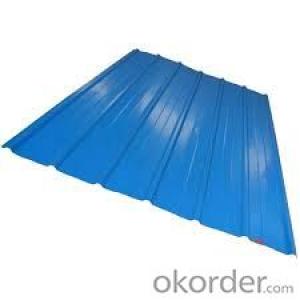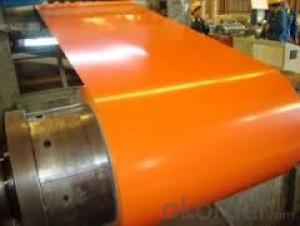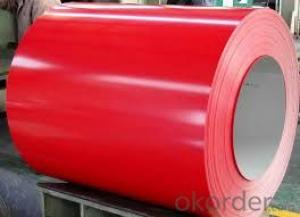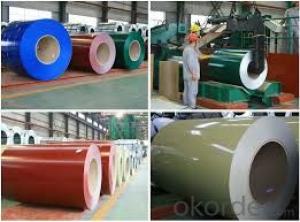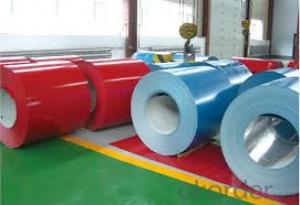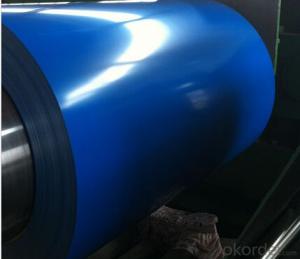PPGI COILS/SECC/HDGI/galvanized steel coil for roofing sheet/china
- Loading Port:
- Dalian
- Payment Terms:
- TT or LC
- Min Order Qty:
- 50 m.t.
- Supply Capability:
- 100000 m.t./month
OKorder Service Pledge
OKorder Financial Service
You Might Also Like
Packaging & Delivery
| Packaging Detail: | seaworthy export package of PPGI coil: 3 eye bands and 3 circumferential bands in steel, galvanized metal fluted rings on inner and outer edges, galvanized metal & waterproof paper wall protection disk, galvanized metal & waterproof paper around circumference. |
| Delivery Detail: | 15-20days |
PRODUCTION DESCRIPTION
NAME
| PPGI | GALVANIZED
| GALVALUME/ALUZINC
| ||
CERTIFICATE | ISO9001:2008 | ||||
STANDARD
| EN10142 JIS G3302 GB/T-12754-2006 | ASTM A653 JIS G3302 SGCC/SGCH GB/T2518 European Standard | ASTM A792 JIS G3321 JIS G3317
| ||
GRADE
| CGCC CGCH CGCD1-CGCD3 CGC340-CGC570 GRADE
| SS GRADE33-80 SGCC SGCH SGCD1-SGCD3 SGC340-SGC570 SGCC DX51D | GRADE33-80 SGLCC SGLCD SGLCDD SGLC400-SGLC570 SZACC SZACH SZAC340R | ||
Mode No of prepainted steel coil | 0.16MM-1.5MM*1250MM OR UNDER | (0.12-1.5)*1250MM OR UNDER | 0.16MM-1.5MM*1250MM OR UNDER | ||
Type of prepainted steel coil
| Steel coil Steel sheets/plates Corrugated steel sheets/plates
| Steel coil Steel sheets/plates Corrugated steel sheets/plates | Steel coil Steel sheets/plates Corrugated steel sheets/plates
| ||
Technique of prepainted steel coil | Hot rolled-cold rolled -galvalume /galvanized -PPGI/PPGL | Hot rolled-cold rolled - galvanized | Hot rolled-cold rolled -galvalume /Aluzinc
| ||
Surface treatment of prepainted steel coil | Mini/regular/big/zero spangle, Chromate treatment /chromate-free treatment /untreated unoile/oiled, TENSION LEVELLERT SKIN PASS anti-fingerprint/un-anti-fingerprint, Coating,color | Mini/regular/big/zero spangle, Chromate treatment /chromate-free treatment /untreated unoile/oiled, TENSION LEVELLERT SKIN PASS anti-fingerprint/un-anti-fingerprint, Coating
| |||
Application of prepainted steel coil | Structural use ,roofing, commercial use, household appliance, industry, family | ||||
SPECIAL APPLICATION | Wear resistant steel, high- strength - steel plate | ||||
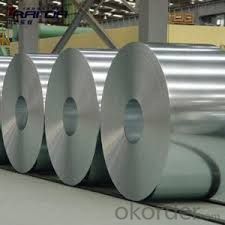
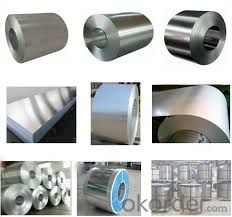
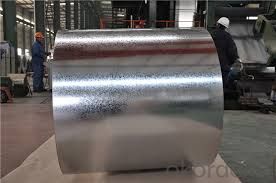
galvanized steel coil for roofing sheet features:
1. Zinc coating :30-350g/m2( as required)
2. Thickness:0.12-5.0mm
3. Width:600-1500mm(750mm, 900mm,914mm, 1000mm, 1219mm,1215mm,1250mm the most common)
4. Coil id:508mm
5. Coil weight: 3-7MT(as required)
6. Surface:regular/mini/zero spangle, chromated, skin pass, dry etc.
7. Application: With excellent cold bending molded manufacturablity, good decoration effect, strong anti-corrosion ability, galvanized steel coils and sheets are also pollution-free and easily recycled. Accordingly, they can be used as final products and basic plates of color coated steel coils and widely applied in construction, home appliances, decoration, ect.
- Q: What is the minimum thickness of a steel coil?
- The minimum thickness of a steel coil can vary depending on the specific grade and type of steel being used, as well as the manufacturing process. However, generally speaking, the minimum thickness of a steel coil is typically around 0.001 inches (0.0254 millimeters). It is important to note that this value is a general guideline and can vary based on the specific requirements and standards set by the industry or application.
- Q: I heard on some shows that you can carbonise steel by heating it red hot then dropping it in black oil. i cant find this no where online, and the process for commercial carbon steel is totally different. can you really carbonise regular steel by heating it to red hot then dropping it in regular black oil. i saw it on mythbusters once. when the made carbon steel hammers to test if 2 hammers smashed together will shatter
- Carburized steel is not the same thing as carbon steel. All steel has carbon in it, but carbon steel is defined as Steel is considered to be carbon steel when no minimum content is specified or required for chromium, cobalt, molybdenum, nickel, niobium, titanium, tungsten, vanadium or zirconium, or any other element to be added to obtain a desired alloying effect; when the specified minimum for copper does not exceed 1.04 percent; or when the maximum content specified for any of the following elements does not exceed the percentages noted: manganese 1.65, silicon 0.60, copper 0.60. Carburizing is a surface treatment. Dropping hot steel in oil is oil quenching. It might get a little carbon in the surface, but oil quenching is mainly used as a slightly slower quenching process than water quenching, not for carburizing. Once it starts cooling down the carbon won't diffuse in. Quenching is used to change the hardness. The simplest way to carburize steel is to pack charcoal around it and heat it to 900 C or so. Industrial processes use a gas like carbon monoxide, but that's mostly just for easier process control.
- Q: Having a greater amount than 2% carbon in steel causes steel to suddenly become brittle. Why is this?
- Carbon fiber has better tensile capability then steel meaning its better while pulled aside. Plus you could mould the fiber to make autos-or homes-out of carbon fiber.
- Q: How do steel coils contribute to the manufacturing of agricultural machinery?
- The manufacturing of agricultural machinery heavily relies on steel coils, which play a vital role in this process. Typically, these coils are crafted from top-notch steel that possesses exceptional strength, durability, and resistance to corrosion. To begin with, agricultural machinery heavily relies on steel coils for the construction of its main structural components, including the chassis, frames, and supports. These components must endure heavy loads, extreme weather conditions, and rough terrains. Thanks to the strength and resilience of steel coils, the machinery can effectively handle these challenging environments and operate efficiently. In addition, steel coils find application in the production of various moving parts and mechanisms within agricultural machinery. For example, gears, shafts, and axles, which are crucial for power transmission and rotational motion transformation, are created using steel coils. The high tensile strength and excellent machinability of steel make it an ideal material for these essential components, ensuring their reliability and longevity. Moreover, steel coils contribute to the manufacturing of agricultural machinery by providing a protective layer against wear and tear. Often, these coils are coated with specialized finishes or paints to enhance their resistance to rust, chemicals, and abrasion. This protective layer significantly prolongs the machinery's lifespan, reduces the need for frequent maintenance and repairs, and ultimately increases its overall efficiency and productivity. Furthermore, the versatility of steel coils allows for customization and adaptation to meet the specific requirements of agricultural machinery. Manufacturers can shape and mold the coils into different sizes and dimensions, enabling the production of machinery suitable for various farming practices and applications. Whether it's tractors, harvesters, or irrigation systems, steel coils are crucial for creating versatile and dependable agricultural machinery. In conclusion, steel coils are essential in the manufacturing of agricultural machinery due to their strength, durability, resistance to corrosion, and customization capabilities. From structural components to moving parts and protective coatings, steel coils greatly contribute to the efficiency, reliability, and longevity of agricultural machinery, thus providing significant support to the global agricultural industry.
- Q: What are the common methods of storing steel coils in warehouses?
- There are several common methods for storing steel coils in warehouses, depending on the size and weight of the coils, as well as the available space and resources in the warehouse. Here are some of the most commonly used methods: 1. Block stacking: This method involves stacking the steel coils directly on top of each other, forming a block. The coils are typically aligned in rows and columns, with wood or rubber blocks placed between the layers to provide stability and prevent damage. 2. Racking systems: Racks are often used to store steel coils in warehouses. There are various types of racks, including cantilever racks, coil racks, and structural racks. These racks provide a structured system for organizing and storing the coils, allowing for easy access and efficient use of space. 3. Coil cradles: Coil cradles are a type of storage equipment specifically designed for steel coils. They consist of a series of cradles or saddles that securely hold the coils in place. These cradles can be stacked on top of each other to maximize vertical space utilization. 4. Coil pads: Coil pads are flat platforms made from materials such as wood, rubber, or foam. They are placed on the warehouse floor, and the steel coils are then stacked directly on top of them. Coil pads help to distribute the weight of the coils evenly and protect them from damage caused by contact with the floor. 5. Slit coil storage: Slit coils, which are narrower and lighter than full-size coils, can be stored using specialized storage systems. These systems often consist of racks or shelves equipped with dividers or separators to keep the coils organized and prevent them from unraveling. It is important to note that regardless of the storage method used, safety precautions should be followed when handling and storing steel coils in warehouses. This includes ensuring proper weight distribution, using appropriate lifting equipment, and adhering to industry-specific guidelines and regulations.
- Q: How are steel coils transported?
- Steel coils are typically transported by truck, train, or ship, depending on the distance and location. They are usually secured with steel strapping or wire rope and loaded onto specialized trailers or containers designed to handle their weight and size.
- Q: I am getting a barn soon and I was debating between wood, and steel. I think steel would look nicer [painted of course] and I was wondering which is cheaper. Any extra info would be great. Thanks x
- Steel okorder /
- Q: Can steel coils be stored outdoors?
- Steel coils can be stored outdoors, but it is important to protect them from moisture and other environmental elements to prevent rust and damage.
- Q: How are steel coils used in the production of automotive suspension systems?
- Steel coils are used in the production of automotive suspension systems as they provide the necessary support and flexibility to absorb shocks and vibrations. These coils are typically used in the construction of coil springs, which are then integrated into the suspension system to ensure a smooth and comfortable ride for the vehicle.
- Q: How are steel coils used in the automotive stamping process?
- Steel coils are used in the automotive stamping process as they are unrolled and fed into stamping machines, where they are shaped and cut into various automotive parts such as body panels, chassis components, and engine parts.
Send your message to us
PPGI COILS/SECC/HDGI/galvanized steel coil for roofing sheet/china
- Loading Port:
- Dalian
- Payment Terms:
- TT or LC
- Min Order Qty:
- 50 m.t.
- Supply Capability:
- 100000 m.t./month
OKorder Service Pledge
OKorder Financial Service
Similar products
Hot products
Hot Searches
Related keywords
